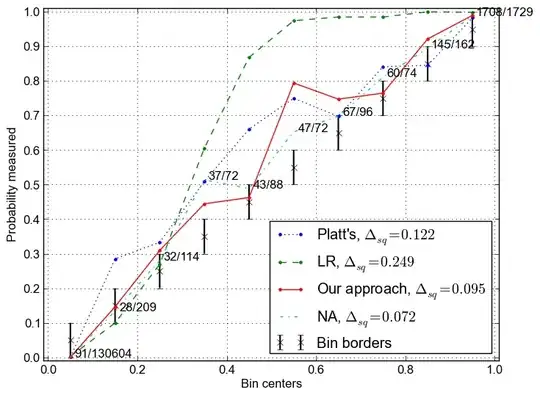Suppose $X_1,X_2,\ldots,X_n$ are i.i.d random variables with an absolutely continuous distribution.
We say the observation $X_i$ has rank $R_i$ if $$X_i=X_{(R_i)}\quad,\,i=1,2,\ldots,n,$$
where $X_{(k)}$ is the $k$-th order statistic.
I am looking for the correlation between $X_i$ and $R_i$ for each $i=1,\ldots,n$.
Let us assume that $X_i\sim F$, where the distribution function $F$ is known. The difficulty I am facing is that I do not know the joint distribution of $(X_i,R_i)$, which is required for finding $E(X_iR_i)$ in the expression for the covariance. But I suspect that the correlation can be derived regardless.
We can find the mean and variance of $X_i$ and $R_i$ separately once we have the distribution $F$ at hand. But how can we find the covariance?
I know that the conditional distribution $[(X_1,\ldots,X_n)\mid X_{(1)},\ldots,X_{(n)}]$ has the form
$$P\left[X_1=x_1,\ldots,X_n=x_n\mid X_{(1)}=x_{(1)},\ldots,X_{(n)}=x_{(n)}\right]=\frac{1}{n!}\mathbf1_{(x_1,\ldots,x_n)\in A},$$
where $A$ is the set of $n!$ realisations of $(x_{(1)},\ldots,x_{(n)})$.
And that the rank vector $(R_1,R_2,\ldots,R_n)$ is also distributed as
$$P(R_1=r_1,\ldots,R_n=r_n)=\frac{1}{n!}\mathbf 1_{(r_1,\ldots,r_n)\in B},$$
where $B$ is the set of $n!$ realisations of $(1,2,\ldots,n)$.
Any hints on how to proceed would be great.
